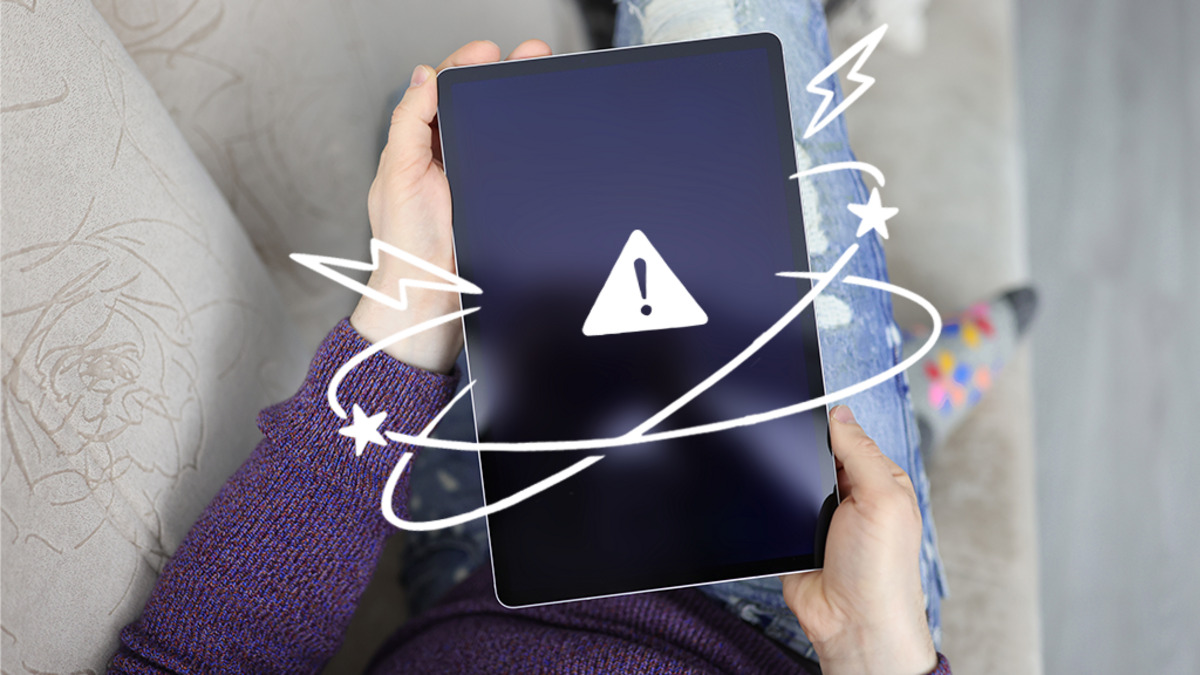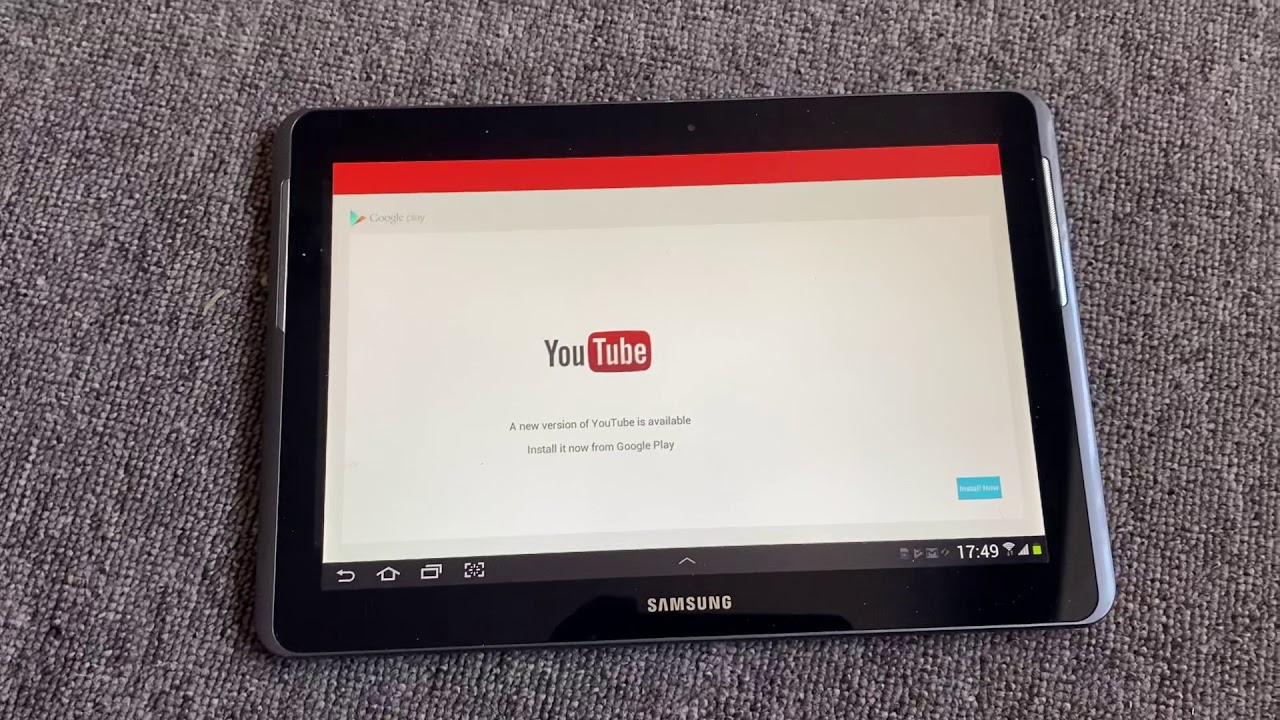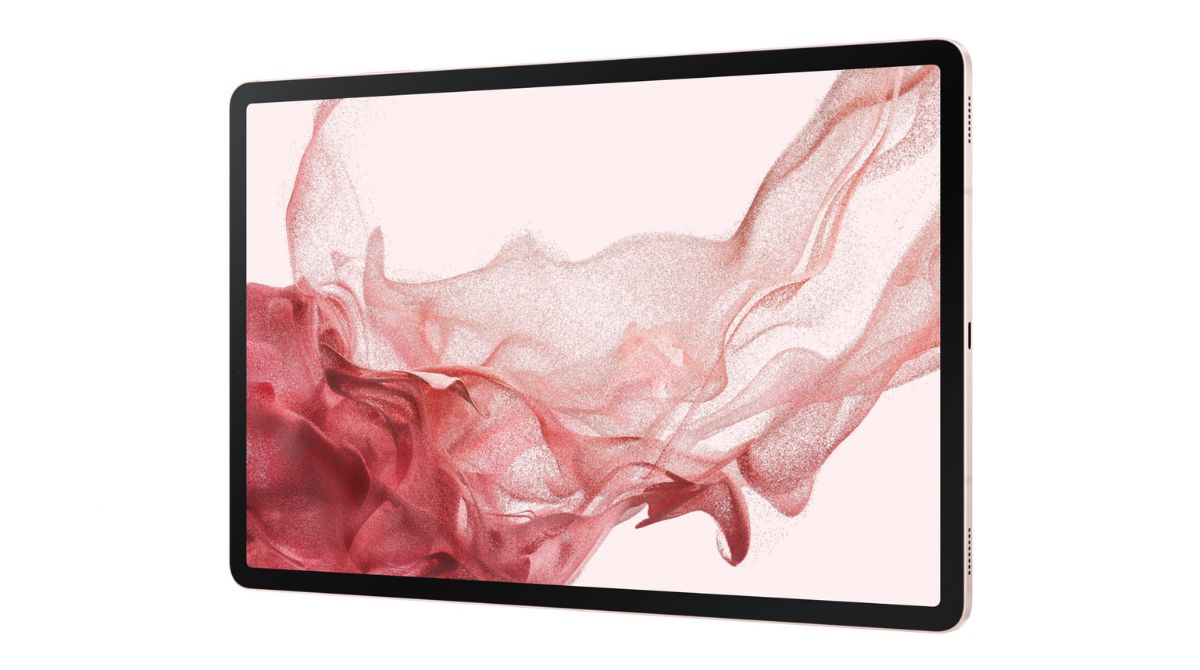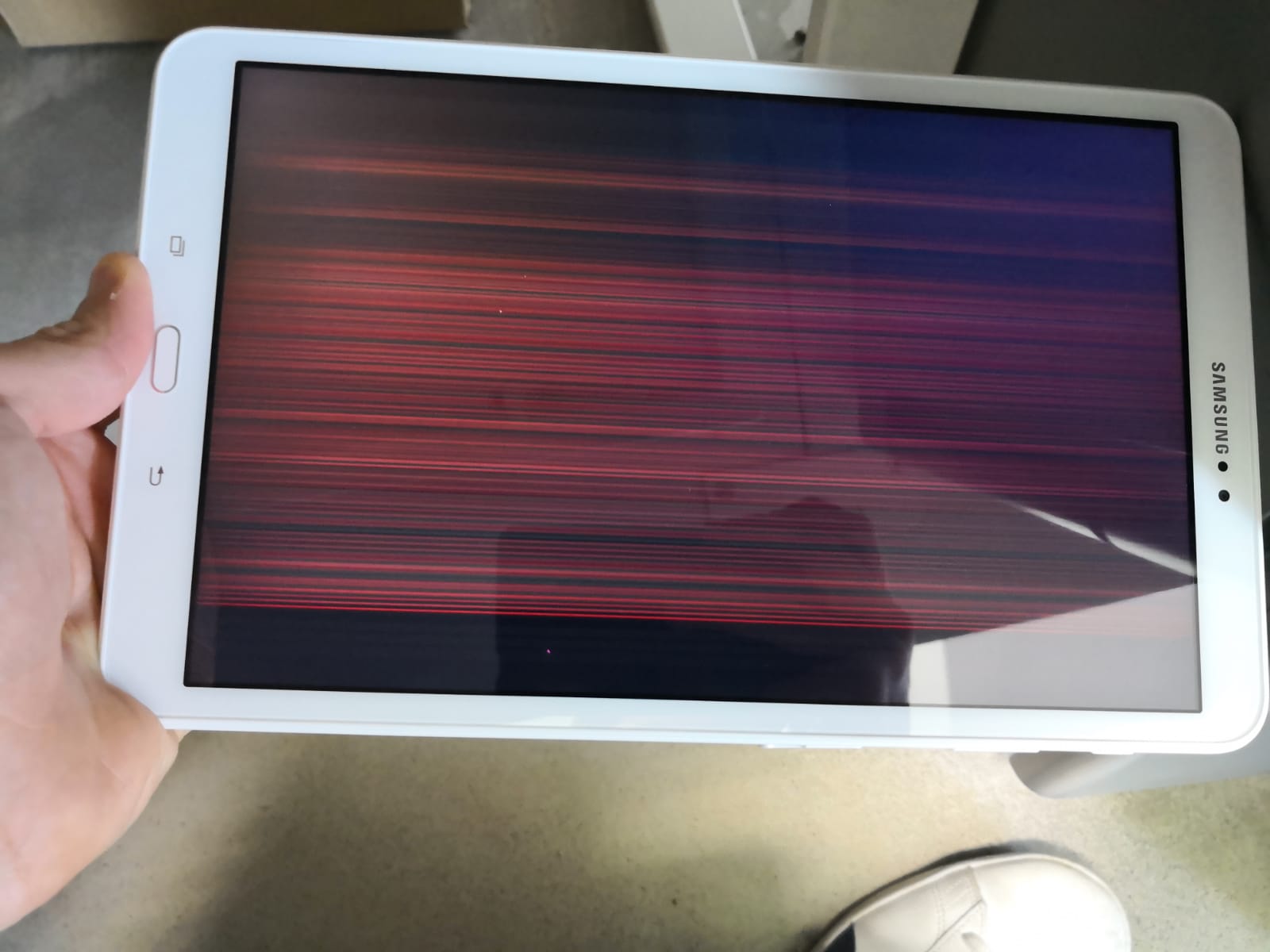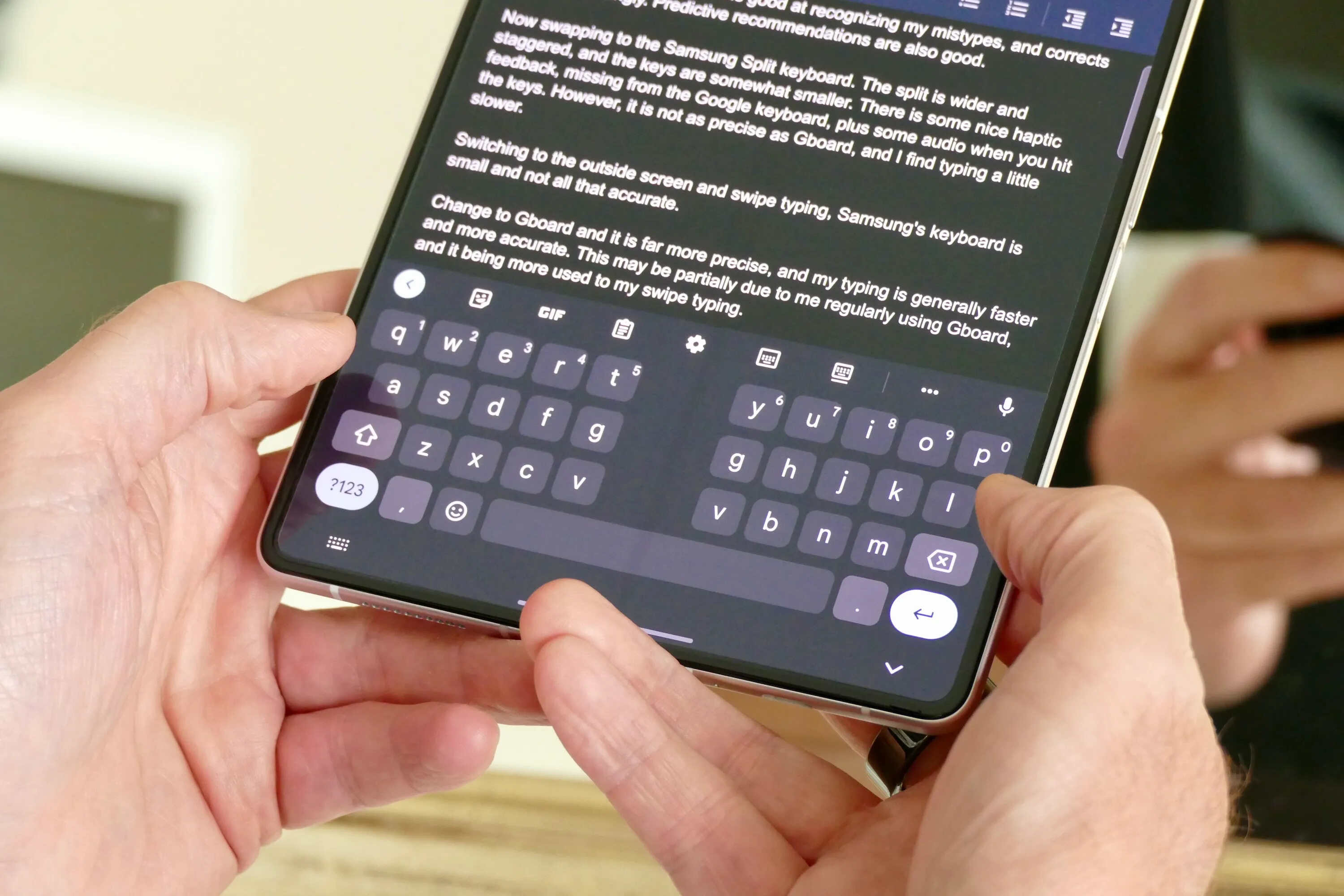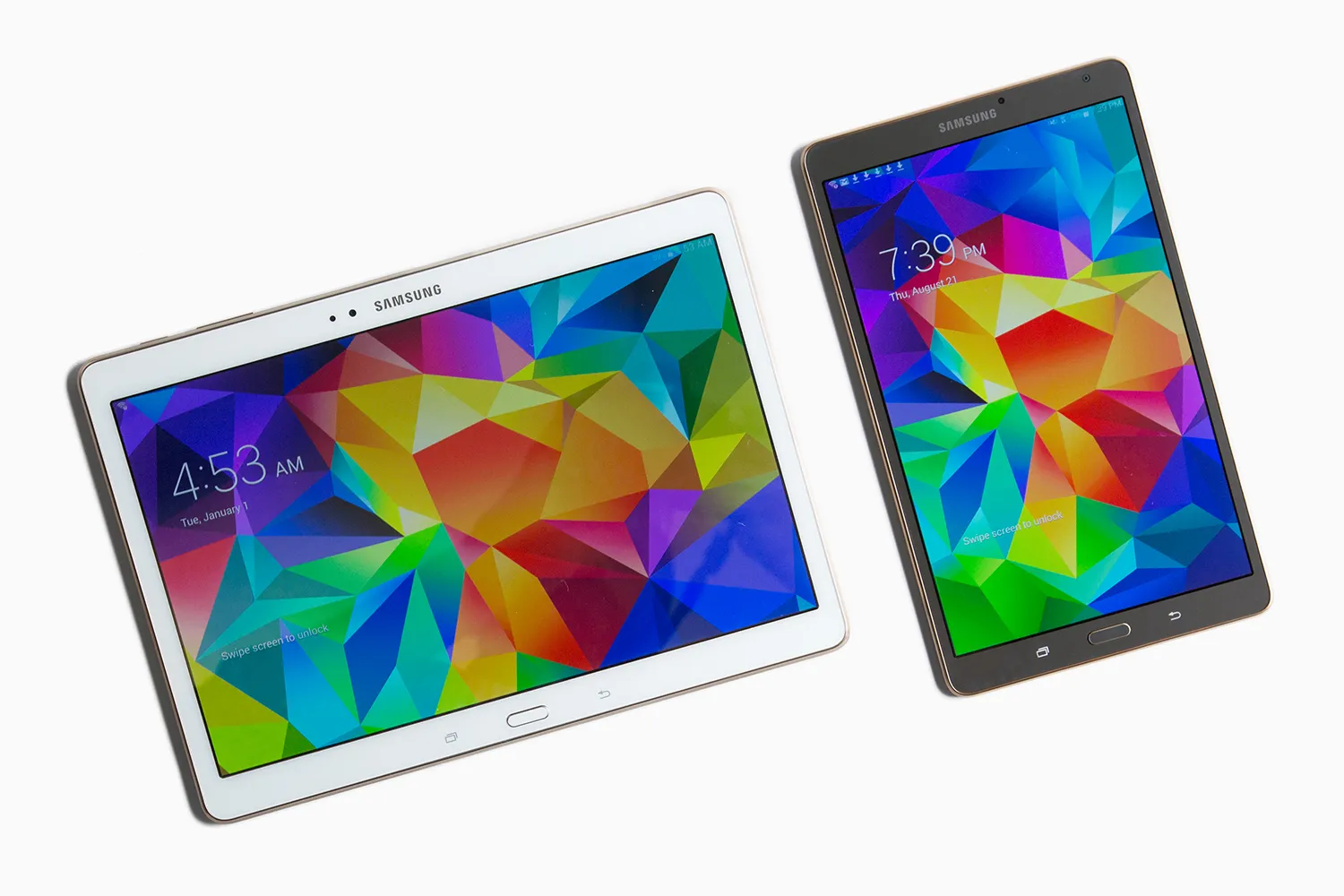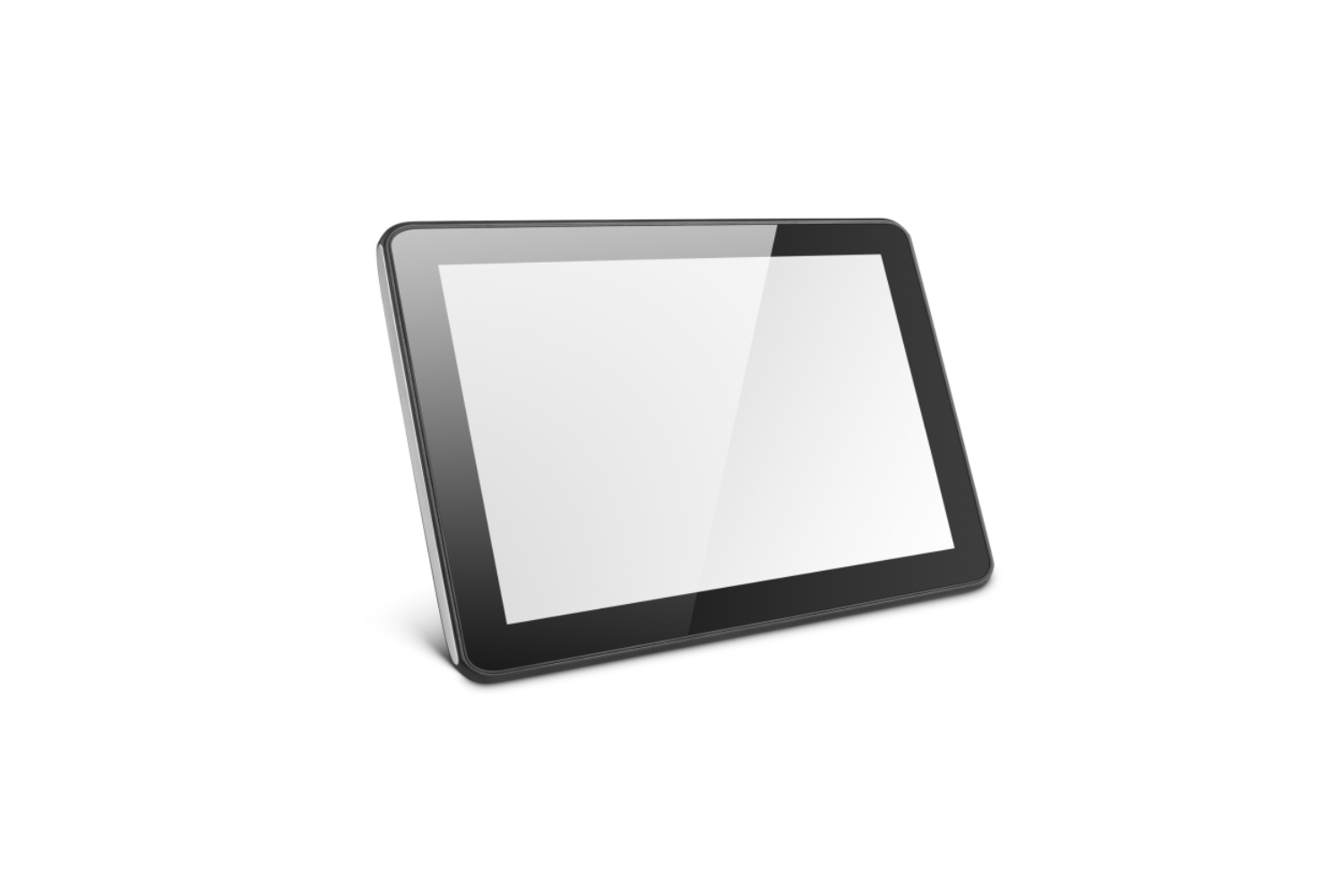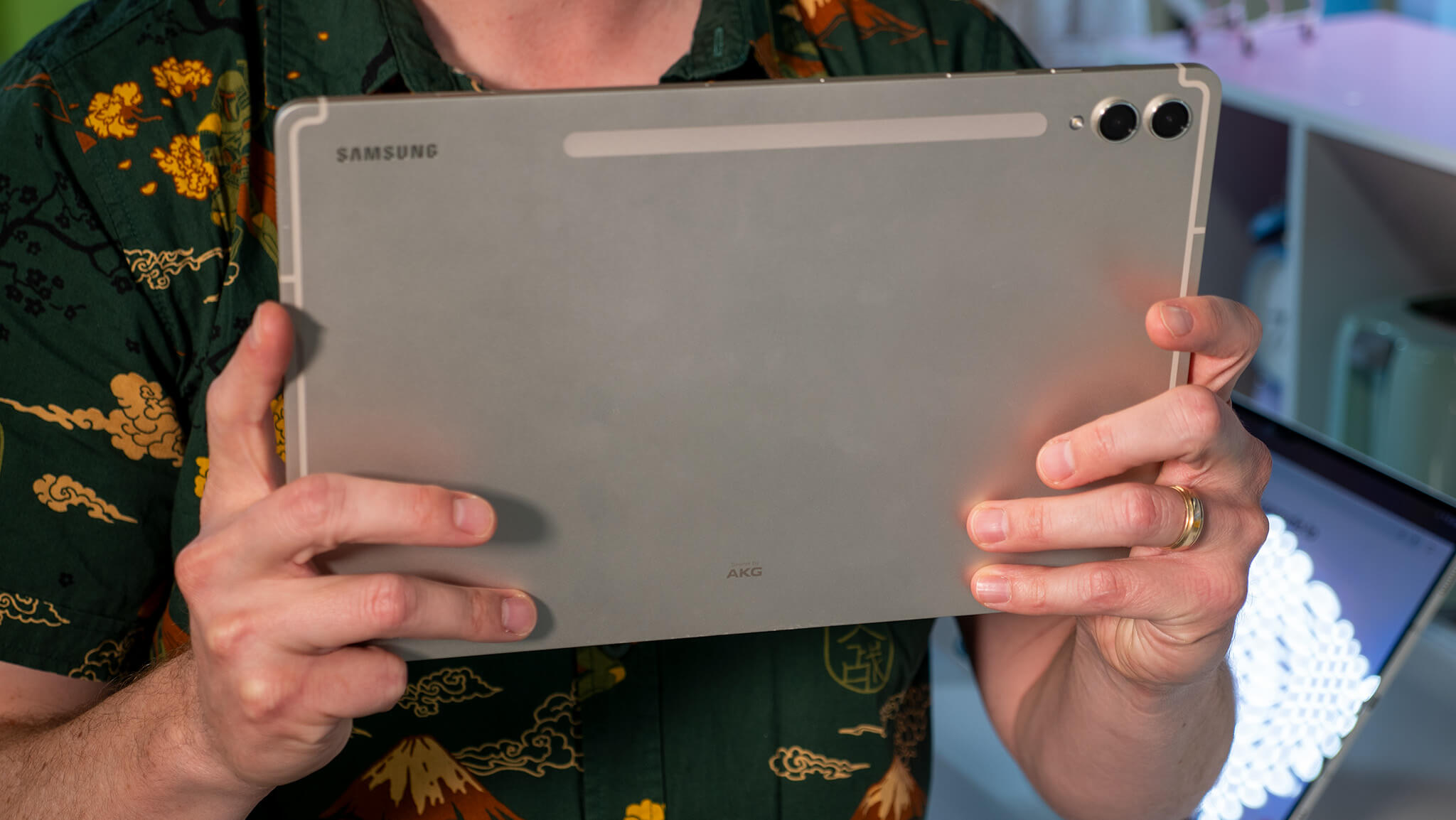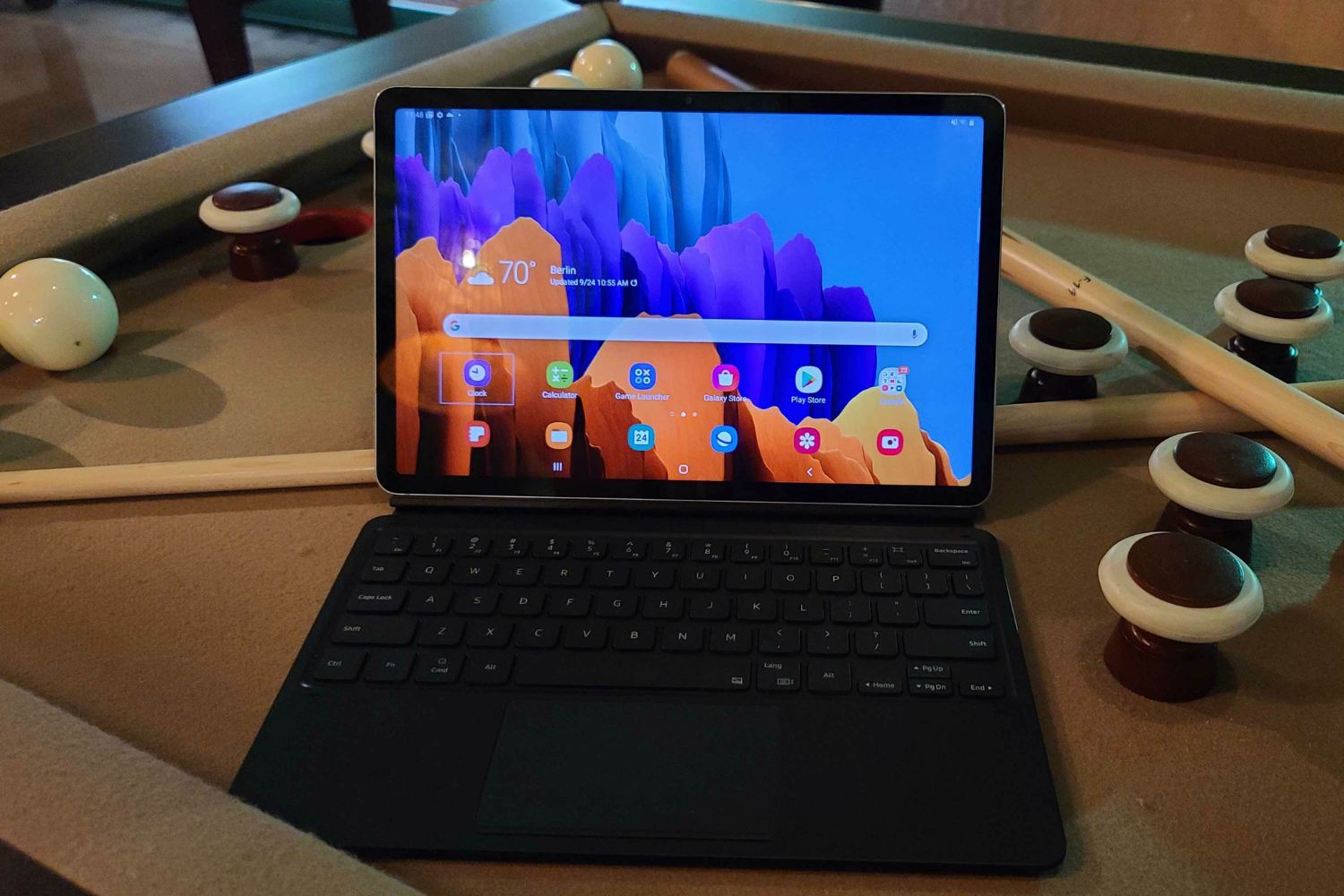Introduction
Welcome to the world of Samsung tablets! These devices are known for their sleek design, powerful performance, and innovative features. Whether you use your Samsung tablet for work, entertainment, or staying connected with loved ones, encountering technical issues can be frustrating.
In this article, we will guide you on how to troubleshoot and fix common problems that you may encounter with your Samsung tablet. From software glitches to hardware issues, we will explore various solutions to get your tablet up and running smoothly again.
Before diving into the troubleshooting methods, it’s important to remember that not all issues can be resolved by yourself. Some problems may require professional assistance or even hardware repair or replacement. However, by following the steps outlined in this article, you can often resolve minor issues and improve the performance of your Samsung tablet.
Keep in mind that these troubleshooting suggestions are specifically tailored for Samsung tablets, which run on the Android operating system. If you’re using a different tablet brand or operating system, the steps may vary.
Now, let’s dive into the world of Samsung tablet troubleshooting and get your device back on track!
Troubleshooting Common Issues
When it comes to troubleshooting common issues on your Samsung tablet, there are a few key steps you can take. These methods can help identify and resolve many software-related problems that you may encounter. Before moving on to more advanced troubleshooting steps, let’s start with the basics:
- Restart your tablet: Sometimes, a simple restart can work wonders. Press and hold the power button, then select “Restart” from the menu that appears. This can help clear temporary glitches and refresh your tablet’s system.
- Check for software updates: Keeping your tablet’s software up to date is essential for optimal performance. Go to “Settings”, then “Software Update” to check for any available updates. Install any pending updates to ensure your tablet has the latest features, bug fixes, and security patches.
- Close unused apps: Having too many apps running in the background can slow down your tablet’s performance. Swipe up from the bottom of the screen to access the app switcher, then swipe left or right to close any unnecessary apps.
- Clear app cache and data: Apps store temporary files and data that can accumulate over time and cause issues. Go to “Settings”, then “Apps”, select the problematic app, and choose “Clear cache” or “Clear storage” to free up space and potentially resolve any app-related problems.
- Restart in safe mode: If you suspect that a recently installed app is causing issues, restarting your tablet in safe mode can help you determine which app is the culprit. Press and hold the power button, then tap and hold “Power off” until the option to restart in safe mode appears. In safe mode, only pre-installed system apps will be active, allowing you to troubleshoot without interference from third-party apps.
These are some initial troubleshooting steps that can address common issues on your Samsung tablet. By following these strategies, you can often resolve minor problems and improve the overall performance of your device. If you’re still experiencing issues after trying these methods, don’t worry. We’ll explore more advanced troubleshooting steps in the following sections.
Restarting the Tablet
One of the simplest and most effective troubleshooting steps you can take when encountering issues with your Samsung tablet is to restart the device. Restarting can help resolve temporary glitches, clear out system errors, and refresh the tablet’s performance. Here’s how to do it:
- Press and hold the power button: Locate the power button on your tablet, usually located on the side or top of the device. Press and hold the power button until the power menu appears on the screen.
- Tap on “Restart”: Once the power menu is displayed, tap on the “Restart” option. Your tablet will then begin the restart process.
- Wait for the tablet to restart: Give your tablet a few moments to shut down and boot up again. You will see the Samsung logo appear on the screen as the tablet restarts.
After the tablet has restarted, check if the issue you were experiencing has been resolved. Restarting the tablet is often the first troubleshooting step recommended by most IT professionals, as it can quickly fix minor software glitches and improve device performance.
If restarting the tablet doesn’t solve the problem, you may need to try additional troubleshooting steps specific to the issue you are facing. Restarting is a great starting point, but keep in mind that it may not resolve more complex issues.
In the next section, we will explore how to clear app cache and data, which can help resolve app-related problems and free up storage space on your tablet.
Clearing App Cache and Data
If you’re experiencing issues with specific apps on your Samsung tablet, such as crashes, freezing, or slow performance, clearing the app’s cache and data can often resolve the problem. Here’s how you can do it:
- Go to Settings: Open the Settings app on your Samsung tablet. You can usually find it in the app drawer or by swiping down from the top of the screen and tapping on the gear icon.
- Select Apps: In the Settings menu, scroll down and tap on the “Apps” or “Applications” option. This will display a list of all the apps installed on your tablet.
- Find the problematic app: Scroll through the list of apps and locate the app you’re experiencing issues with. Tap on it to access its settings.
- Clear the cache: Once you’re in the app’s settings, you’ll see options such as “Force stop,” “Storage,” and “Permissions.” Tap on “Storage” to access the storage settings for the app. Here, you’ll find the option to “Clear cache.” Tap on it to clear the temporary files stored by the app.
- Clear app data: If clearing the cache doesn’t resolve the issue, you can try clearing the app data as well. In the storage settings for the app, tap on “Clear data” or “Clear storage.” Keep in mind that clearing the data will remove any personalized settings or login information associated with the app. Only do this if essential.
Clearing the app cache and data can help fix various issues, including app crashes, slow performance, and data corruption within the app. Once you’ve cleared the cache and data, you can relaunch the app and see if the problem has been resolved.
If the issue persists or affects multiple apps, it’s worth noting that you can also clear the cache partition on your Samsung tablet. This is a more extensive process that can help resolve system-wide issues. However, it’s recommended to seek step-by-step instructions specific to your tablet model or consult with Samsung support for guidance.
Next, we’ll explore the importance of updating your tablet’s software and apps to ensure optimal performance and security.
Updating Software and Apps
Regularly updating the software and apps on your Samsung tablet is crucial for keeping your device running smoothly and securely. Updates often contain bug fixes, performance improvements, new features, and important security patches. Here’s how you can update your tablet’s software and apps:
- Software updates: To check for and install software updates on your Samsung tablet, go to the Settings app and scroll down to find the “Software Update” option. Tap on it, and if an update is available, follow the on-screen instructions to download and install the update. It’s recommended to connect your tablet to a stable Wi-Fi network and ensure it has sufficient battery life before proceeding with the update.
- Automatic updates: You can enable automatic software updates on your Samsung tablet to ensure that your device stays up to date without manual intervention. In the Software Update settings, look for the option to turn on “Auto download over Wi-Fi” or “Auto-update system.” This way, your tablet will automatically download and install updates when connected to Wi-Fi.
- App updates: Keeping your apps updated is equally important. Open the Google Play Store app on your Samsung tablet and tap on the three-line menu icon in the top-left corner. From the menu, select “My apps & games.” Here, you’ll see a list of apps that have updates available. Tap on the “Update” button next to each app, or tap “Update all” to update all apps at once.
By regularly updating both the software and apps on your Samsung tablet, you can ensure that you have the latest features, enhancements, and bug fixes. Additionally, updating your apps can improve compatibility and performance, providing a smoother user experience.
If you’re experiencing issues with a specific app, updating it to the latest version may help resolve the problem. Developers often release updates to address known issues and improve app stability, so keeping your apps updated is essential for optimal performance.
In the next section, we’ll discuss how to perform a factory reset on your Samsung tablet, which can help resolve persistent software issues.
Performing a Factory Reset
If you’ve tried other troubleshooting steps and are still experiencing persistent issues with your Samsung tablet, performing a factory reset can be a helpful solution. A factory reset will erase all data and settings on your tablet, bringing it back to its original state, just like when you first purchased it. However, it’s essential to note that this process will remove all personal data, so be sure to back up important files and information beforehand. Here’s how you can perform a factory reset on your Samsung tablet:
- Backup your data: Before proceeding with a factory reset, it’s crucial to back up any important data, such as photos, documents, and contacts. You can transfer the data to your computer, use cloud storage services, or utilize Samsung’s Smart Switch app for a comprehensive backup.
- Go to Settings: Open the Settings app on your Samsung tablet.
- Select General Management: In the Settings menu, scroll down and tap on “General Management.”
- Choose Reset: Within the General Management settings, look for the “Reset” option.
- Perform factory reset: Tap on “Reset,” and you will be presented with different reset options, such as “Factory data reset” or “Reset settings.” Select the option that suits your needs. Keep in mind that the terminology might vary slightly depending on your tablet model and Android version.
- Confirm the reset: After selecting the factory reset option, you will be prompted to confirm the action. Read the information carefully to understand the consequences of the reset, then confirm your decision to proceed.
The factory reset process may take several minutes, during which your tablet will erase all data, reset all settings, and restart. Once the reset is complete, your tablet will be in its original state, as if it were fresh out of the box.
Performing a factory reset can help resolve persistent software issues, remove malware or viruses, and improve overall performance. However, remember that this option should be treated as a last resort when other troubleshooting methods have failed to resolve the problem.
In the next section, we’ll explore troubleshooting steps for battery and charging issues that you may encounter with your Samsung tablet.
Battery and Charging Issues
Battery and charging issues can significantly impact the usability of your Samsung tablet. If you’re facing problems like quick battery drain, slow charging, or the tablet not charging at all, there are several troubleshooting steps you can take to resolve these issues:
- Check the charging cable and adapter: Ensure that the charging cable and adapter are in good condition and properly connected. Using a damaged or incompatible cable and adapter can result in charging problems.
- Try a different power source: If you’re charging your tablet via a wall outlet, try using a different outlet. Sometimes, the problem may lie with the power source itself. Additionally, you can try using a different USB port or a different charging cable if you’re charging your tablet via a computer or a power bank.
- Remove any obstructions: Make sure there are no obstructions on the tablet’s charging port, such as lint, dust, or debris. Use a soft brush or compressed air to clean the port gently, if needed.
- Restart your tablet: Sometimes, restarting your tablet can resolve charging issues. Press and hold the power button, then select “Restart” from the menu options.
- Disable power-saving modes: If you have power-saving modes enabled on your tablet, they can limit charging speed. Disable any power-saving modes temporarily to see if it improves charging performance.
- Reset battery settings: Resetting the battery settings can help recalibrate the tablet’s battery and improve battery performance. To do this, go to Settings, then find the “Battery” or “Power” options. Look for the option to “Reset battery settings” or “Calibrate battery,” and follow the on-screen instructions.
- Check for software updates: Software updates can sometimes include bug fixes and optimizations that improve charging performance. Make sure your tablet is running the latest software version by going to Settings, then “Software Update.”
- Use battery optimization: Samsung tablets offer battery optimization features that help extend battery life. Enable these features by going to Settings, then “Battery” or “Device care.” Look for options such as “Battery optimization” or “Optimize battery usage.”
By following these troubleshooting steps, you can often identify and resolve battery and charging issues on your Samsung tablet. If the problem persists even after trying these methods, it’s recommended to reach out to Samsung support or visit an authorized service center for further assistance.
In the next section, we’ll delve into troubleshooting tips for touchscreen problems that you may encounter with your Samsung tablet.
Touchscreen Problems
The touchscreen is a crucial component of your Samsung tablet, allowing you to interact with the device. If you’re experiencing touchscreen issues such as unresponsive gestures, inaccurate touches, or a frozen display, here are some troubleshooting tips to help resolve the problem:
- Clean the screen: Start by cleaning the screen with a soft, lint-free cloth. Sometimes, dirt, oil, or residue on the screen can interfere with touch sensitivity.
- Remove any screen protectors or cases: If you’re using a screen protector or a protective case, they may affect the touchscreen’s functionality. Remove them temporarily to see if the issue persists.
- Restart your tablet: A simple restart can often resolve temporary touchscreen glitches. Press and hold the power button, then select “Restart” from the menu options.
- Perform a touchscreen gesture test: Samsung tablets usually have a built-in touchscreen gesture test that helps diagnose touchscreen issues. To access this test, go to the Phone app (yes, the Phone app), enter “*#0*#” without the quotes, and then select “Touch” or “Touchscreen” from the test menu. Follow the on-screen instructions to test different areas of the touchscreen for responsiveness.
- Update your tablet’s software: Software updates often include improvements and bug fixes that can address touchscreen issues. Make sure your tablet is running the latest software version by going to Settings, then “Software Update.”
- Disable glove mode: If you’ve enabled the glove mode feature on your tablet, try disabling it. While glove mode can improve touchscreen sensitivity when wearing gloves, it may cause issues with regular touch input.
- Reset touchscreen settings: Resetting the touchscreen settings can help recalibrate the touchscreen and resolve issues related to touch accuracy. Go to Settings, then “Display” or “Display and brightness.” Look for an option like “Touchscreen calibration,” “Reset touch settings,” or “Reset touch sensitivity.”
- Perform a factory reset: If none of the above solutions work, performing a factory reset as discussed earlier in this article can help resolve persistent touchscreen issues. Remember to back up your data before proceeding.
By following these troubleshooting steps, you can often resolve common touchscreen problems on your Samsung tablet. However, if the issues persist or worsen, it’s recommended to seek assistance from Samsung support or visit an authorized service center for further diagnosis and repair.
In the next section, we’ll explore troubleshooting tips for Wi-Fi and network connectivity issues on your Samsung tablet.
Wi-Fi and Network Connectivity Troubleshooting
A reliable Wi-Fi and network connection is essential for using various online features and accessing the internet on your Samsung tablet. If you’re facing Wi-Fi or network connectivity issues, try the following troubleshooting steps to get your tablet back online:
- Restart your tablet and router: Start by restarting both your tablet and Wi-Fi router. This simple step can often resolve temporary connectivity issues.
- Check Wi-Fi signal and range: Ensure that you’re within range of your Wi-Fi network and that the signal is strong enough. Move closer to the router to eliminate any distance-related connectivity problems.
- Forget and reconnect to Wi-Fi network: In the Wi-Fi settings of your tablet, select the network you’re having trouble with and choose “Forget” or “Disconnect.” Then reconnect to the network by selecting it and entering the correct password.
- Reset network settings: Resetting the network settings on your tablet can help address complex connectivity issues. Go to the Settings app, then “General Management” or “System.” Look for an option like “Reset,” “Reset network settings,” or “Network reset.” Note that this will remove saved Wi-Fi networks and Bluetooth connections, so be prepared to re-enter passwords and reconnect devices.
- Check the router settings: Ensure that your Wi-Fi router is configured correctly. Verify that the router is broadcasting its network name (SSID) and that the Wi-Fi security settings, such as the password and encryption type, match your tablet’s settings.
- Update router firmware: Check if there are any firmware updates available for your Wi-Fi router. Visit the manufacturer’s website or consult the router’s user manual for instructions on how to update the firmware.
- Connect to a different Wi-Fi network: If possible, try connecting to a different Wi-Fi network to see if the issue is specific to your home network. If your tablet connects successfully to another network, it indicates that there may be an issue with your router or internet service provider.
- Try a mobile hotspot: If all else fails, you can use your mobile device as a Wi-Fi hotspot and connect your tablet to it. This can help determine whether the issue is with your tablet or your home network.
If the above troubleshooting steps don’t resolve your Wi-Fi or network connectivity issues, consider contacting your internet service provider (ISP) for support or reaching out to Samsung’s customer support for further assistance.
In the next section, we’ll discuss troubleshooting tips for issues related to sound and audio on your Samsung tablet.
Issues with Sound and Audio
Having issues with sound and audio on your Samsung tablet can be frustrating, especially if you’re unable to enjoy music, videos, or other multimedia content. If you’re experiencing problems like no sound, distorted audio, or low volume, there are several troubleshooting steps you can take to address them:
- Check volume and mute settings: Ensure that the volume on your tablet is not muted or set too low. Use the volume buttons on the side of your device to adjust the volume levels.
- Clean the speakers and headphone jack: Over time, dust, debris, or lint can accumulate in the speaker grills or headphone jack, affecting audio quality. Use a soft brush or canned air to clean these areas gently.
- Restart your tablet: A simple restart can sometimes resolve software-related audio issues. Press and hold the power button, then select “Restart” from the menu options.
- Check audio settings: Go to the Settings app on your tablet and look for the “Sound” or “Audio” options. Verify that the media volume, call volume, and ringtone volume are properly adjusted and not muted.
- Disconnect and reconnect headphones or speakers: If you’re using headphones or external speakers, unplug them and plug them back in. Sometimes, loose connections can cause audio disturbances.
- Check audio output options: If you’re using Bluetooth speakers or headphones, ensure that the audio output is set to the correct device. Swipe down from the top of the screen to access the quick settings panel and check the audio output selection.
- Clear app cache and data: If the audio issue is specific to certain apps, clearing the app cache and data as discussed in a previous section may help resolve the problem. Navigate to the Settings app, then “Apps,” and select the problematic app. Tap on “Storage,” and choose “Clear cache” or “Clear storage.”
- Update software and apps: Keeping your tablet’s software and apps up to date is important for optimal performance, including audio-related functions. Check for software updates in the Settings app and update any relevant apps from the Google Play Store.
- Perform a factory reset: If none of the above methods work, you can try performing a factory reset as discussed earlier in this article. Remember to back up your data before proceeding, as a factory reset will erase all data and settings on your tablet.
By following these troubleshooting steps, you can often resolve sound and audio issues on your Samsung tablet. If the problem persists, consider reaching out to Samsung support or visiting an authorized service center for further assistance and possible hardware diagnostics.
In the final section, we’ll briefly discuss troubleshooting tips for fixing camera problems on your Samsung tablet.
Fixing Camera Problems
The camera on your Samsung tablet allows you to capture precious moments and engage in video calls. If you’re experiencing camera issues like blurry photos, black screen, or error messages, there are several troubleshooting steps you can take to fix them:
- Check for obstructions: Ensure that there are no obstructions blocking the camera lens or the flash. Clean the lens gently with a soft, lint-free cloth.
- Restart your tablet: Sometimes, a simple restart can resolve software-related camera issues. Press and hold the power button, then select “Restart” from the menu options.
- Clear camera app cache and data: Similar to clearing app cache and data for other apps, clearing the camera app cache and data can help resolve problems specific to the camera. Go to the Settings app, then “Apps,” and select the camera app. Choose “Storage,” and tap on “Clear cache” or “Clear storage.”
- Check camera settings: Make sure that the camera settings are properly adjusted. Ensure that the flash is set to the desired mode, the focus is set correctly, and any other settings are configured as desired.
- Update software and camera app: Make sure that your tablet’s software and the camera app are up to date. Check for software updates in the Settings app and update the camera app from the Google Play Store if necessary.
- Disable other camera apps: If you have multiple camera apps installed, try disabling or uninstalling the ones you don’t need. Sometimes, conflicts between different camera apps can cause issues.
- Reset camera settings: If you have made custom changes to the camera settings and the issue persists, you can try resetting the camera settings. Look for the option within the camera app or in the tablet’s general settings.
- Perform a factory reset: If none of the above solutions work, performing a factory reset as discussed earlier in this article may help resolve persistent camera problems. Remember to back up your data before proceeding.
By following these troubleshooting steps, you can often resolve common camera issues on your Samsung tablet. If the problem continues or appears to be hardware-related, it’s recommended to seek assistance from Samsung support or visit an authorized service center for further evaluation and repair.
Now that we’ve covered troubleshooting tips for various common issues on Samsung tablets, you’re equipped with the knowledge to tackle these problems and get your tablet back in optimal working condition.
Hardware Repair and Replacement Options
In some cases, the issues you may be facing with your Samsung tablet may require hardware repair or replacement. While software troubleshooting steps can often resolve common problems, there are situations where the underlying hardware is the root cause of the issue. Here are some hardware repair and replacement options to consider:
- Contact Samsung support: If you’re experiencing persistent issues with your tablet that software troubleshooting steps haven’t resolved, it’s advisable to reach out to Samsung support. They can provide guidance, diagnose the problem, and suggest appropriate repair or replacement solutions.
- Authorized service center: Samsung has authorized service centers across various locations. These centers have trained technicians who specialize in repairing Samsung devices. Contact your nearest authorized service center for professional assistance.
- Warranty coverage: If your Samsung tablet is still under warranty, it’s important to check the terms and conditions. Warranty coverage may include repairs or even replacement of the device if it’s determined to be a manufacturing defect. Contact Samsung or refer to your warranty documentation for more information.
- Out-of-warranty repair: If your tablet is no longer under warranty and requires repair, you can still reach out to authorized service centers or third-party repair shops. They can assess the problem, provide a repair estimate, and carry out the necessary repairs for a fee.
- Replacement parts: In some cases, specific hardware components may require replacement. If you have expertise in electronics and the necessary tools, you may be able to purchase replacement parts online and attempt the repair yourself. However, note that this approach requires technical proficiency and may void any existing warranty.
- Upgrade to a new tablet: If your Samsung tablet is aging, experiencing multiple hardware issues, or not meeting your current needs, it might be worth considering upgrading to a new tablet model. This option guarantees a device with updated hardware and improved performance.
It’s important to note that hardware repair and replacement options may vary depending on your location, warranty coverage, and the specific model of your Samsung tablet. Always consult with authorized service centers or reach out to Samsung support for the most accurate information and guidance.
By exploring these hardware repair and replacement options, you can make informed decisions on how to address more complex issues and ensure that your Samsung tablet continues to serve you effectively.
Conclusion
In this comprehensive guide, we’ve explored various troubleshooting steps and solutions to common issues that you may encounter with your Samsung tablet. From software glitches to hardware problems, we’ve covered a wide range of topics to help you get your tablet back in optimal working condition.
Throughout the troubleshooting process, remember to prioritize safety and data backup. Backing up your important files and data ensures that you don’t lose any valuable information during the troubleshooting or repair process.
Starting with basic troubleshooting steps like restarting the tablet and checking for software updates, we’ve delved into more advanced methods such as clearing app cache and data, performing a factory reset, and addressing hardware repair or replacement options when necessary.
It’s important to note that not all issues can be resolved through these troubleshooting steps. In some cases, professional assistance or hardware repair may be required. If you’re unsure about any specific troubleshooting step or if the problem persists, it’s recommended to reach out to Samsung support or visit an authorized service center for expert guidance and assistance.
Remember that each Samsung tablet model may have slight differences in terms of settings, options, and menus. It’s always a good idea to consult your tablet’s user manual or refer to the manufacturer’s website for model-specific troubleshooting instructions.
We hope that this guide has provided you with the knowledge and tools to successfully troubleshoot and resolve common issues with your Samsung tablet. By following these steps and seeking professional help when needed, you can keep your tablet running smoothly and enjoy all the features and functionality it has to offer.







